Will Rezoning Produce Affordable Housing?
Santa Barbara County Meeting to Explore the Answers

The ask in the League of Women Voters’ letter in January was straightforward — before the County of Santa Barbara rezoned about 40 properties from commercial or agricultural to residential, wouldn’t it be good to know what kinds of housing developers planned to build on them? At issue is affordable housing, and getting there is like tumbling dice. There’s a good chance you’ll get 10 to 20 percent lower-income housing, and a much greater chance that 80 to 90 percent will be market-rate and out of reach to the most vulnerable, and largest, group of renters in South County.
For instance, on the county’s rezoning list are 18 parcels in South County, 12 of them agricultural parcels just outside the borders of the City of Goleta that add up to 340 acres. Three of them have applied for the fast-track Builder’s Remedy permit process, and the three would total 2,549 units through increased density per acre. Under the Builder’s Remedy, 20 percent, or about 500, of the resulting housing are to be “affordable,” which leaves roughly 2,040 or more renting at what the market will bear.
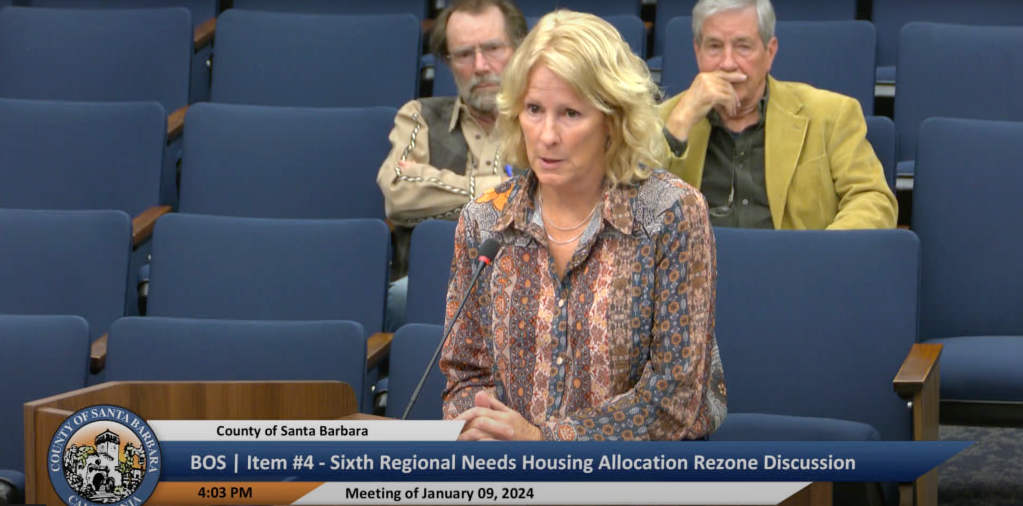
“Our hope for this meeting is that people will have a better understanding of what kind of development we are going to have,” said Dianne Black, a retired director of the county’s Planning and Development department and now a member of the housing committee for the League of Women Voters.
In the January letter, the League advised, “The best way to ensure the production of affordable housing is to have existing control over the property it is built on.” And, before changing the zoning of any agricultural parcel to residential, the League suggested the county “ensure affordable housing would result.”
“We would like to have binding commitments instead of grand plans,” Black said.
The county is faced with the every-eight-years Housing Element assessment that informs the State of California of its plans to make a certain amount of housing possible — more than 5,000 units for the 2024-2031 cycle — through strategies like rezoning parcels to multi-family residential, or apartment dwellings. To reach the target, the county has counted the housing projects in the pipeline, expected granny flats, and its own plans to add housing to county-owned parcels. With the possible exception of county parcels, these are expected to be mostly market-rate housing.
The remaining numbers to satisfy the state’s quota in South County is an additional 1,615 very-low- and low-income homes and 855 moderate-income homes. In the above-moderate category, the South Coast counts 801 more than it needs. For North County, only the very-low- and low-income segments lack proposed units, missing the target by 487 units. For a two-person household, very low translates to $59,200 in annual income; low to $94,800; and moderate to $103,000.
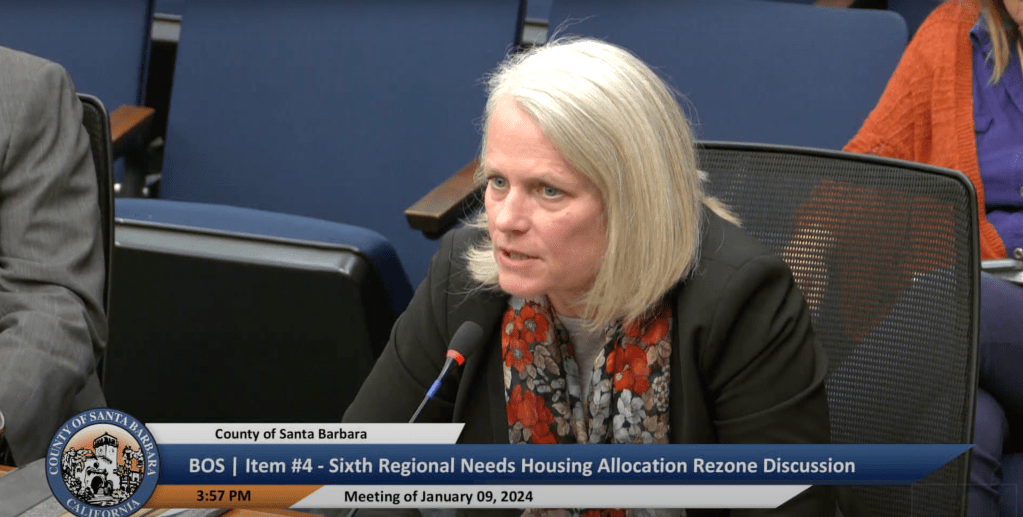
Affordability generally translates to density, with the county’s multi-family parcels running from 20 units per acre to as high as 50 units within certain criteria. Emphasizing that the county will be choosing the parcels it will rezone, Megan Turley, who leads the League’s housing committee, said, “If the county is going to up-zone properties for housing development, then the community benefit should have a greater than 20-30 percent deed restriction for affordable housing at the very-low- and low-income levels.”
To reduce widespread rezoning yet achieve affordable housing, the League’s letter urged that additional parcels owned by the county, faith groups, schools, or other public agencies be identified, as potential partners to nonprofit groups like the city and county Housing Authorities and People’s Self-Help Housing, which have astonishing track records of success building lower-income and senior housing, especially when the land is free. Such housing, the League advised, should be 100 percent deed-restricted, below-market-rate homes.
The best place to understand the housing numbers, suggested Lisa Plowman, the county’s planning director, is the Balancing Act tool, which is broken up into a South Coast map and a North County map. They show where the land choices lie and how many homes are needed ahead of the March 19 meeting. The information is updated every Monday.
Among the roughly 40 parcels up for rezoning, “A significant portion … need[s] to be rezoned to satisfy the RHNA for lower and moderate income,” Plowman said. (RHNA is the state’s Regional Housing Needs Allocation, or the housing targets.)
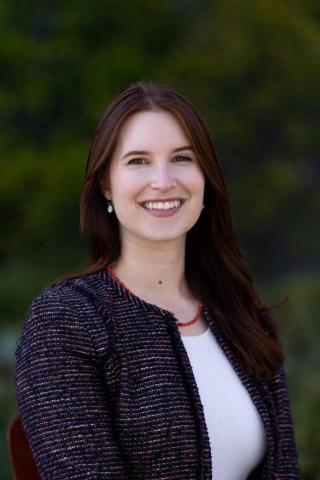
On March 5, the Board of Supervisors agreed to schedule a meeting for the afternoon of Tuesday, March 19, to bring property owners and developers from North County and South County to present their plans. Supervisor Bob Nelson objected that was too little notice for his North County constituents to prep for a “beauty contest” like this, but Plowman advised that time was short. The meeting on March 19 comes before the Planning Commission’s and supervisors’ meetings for the rezonings vital to completing the state-required Housing Element.
The meaning of “affordable” housing is different things to different people, but for the League of Women Voters, the definition of “affordable” is very low, low and moderate-income housing. Though housing subsidies exist for lower-income categories, in an area like Santa Barbara with ever-escalating rents and home prices, tenants in the moderate and even above-moderate income categories — sometimes called “the workforce” — are struggling, too.
“For other income groups that are higher than low income, but still can’t afford the rents or the price to purchase a home, there is no subsidy source,” said Rob Fredericks, who runs the Housing Authority of the City of Santa Barbara. “Without local subsidies, like bond measures, or a portion of transient occupancy tax or some other local revenue-raising measure, I fear there will be no help for those who are not low-income yet still cannot afford rents.”
Upcoming Housing Element programs may hold some incentives, Plowman said. Though the idea exists only on paper at this point, a county density bonus program for moderate-income units is in the works that could exchange concessions like height or parking for homes to hold the so-called “missing middle.”
While the zoning for new homes is to go where needs like public transit, grocery stores, and schools already exist, the county is not obligated to build the units, but to simply make them possible through zoning. What developers view as possible may become known at the March 19 meeting. It will be held at 2 p.m. in the Planning Commission room on the ground floor of the County Administration Building in Santa Barbara, 105 East Anapamu Street. In North County, the session occurs at the Betteravia Center, 511 East Lakeside Parkway. Participation is in-person or written. Details on viewing the event virtually can be found here. The agenda can be found here.
Correction: The League of Women Voters’ definition of “affordable” housing includes the moderate-income category, in addition to very low and low. Also, a builders remedy development is required to be 20 percent lower income or 100 percent moderate income. Participation on March 19 is in-person only, and the event may be viewed online.
Premier Events
Thu, May 02
5:00 PM
Santa Barbara
Things with Wings at Art & Soul
Sat, May 04
10:00 AM
Lompoc
RocketTown Comic Con 2024
Wed, May 01
7:30 PM
Santa Barbara
American Theatre Guild Presents “Come From Away”
Thu, May 02
5:00 PM
Santa Barbara
100th Birthday Tribute for James Galanos
Thu, May 02
5:00 PM
Santa Barbara
Meet the Creator of The Caregiver Oracle Deck
Fri, May 03
4:00 PM
Santa Barbara
Santa Barbara Fair+Expo “Double Thrill Double Fun”
Fri, May 03
8:00 PM
Santa barbara
Performance by Marca MP
Sat, May 04
10:00 AM
Solvang
Touch A Truck
Sat, May 04
11:00 AM
Santa Barbara
Mental Wellness Center’s 28th Annual Arts Faire
Sat, May 04
11:00 AM
Santa Barbara
Community History Day
Sat, May 04
3:00 PM
Solvang
The SYV Chorale Presents Disney Magic Concert
Sat, May 04
7:00 PM
Santa Barbara
A Star Wars Cantina Celebration: Renegades, Rebels, and Rogues
Thu, May 02 5:00 PM
Santa Barbara
Things with Wings at Art & Soul
Sat, May 04 10:00 AM
Lompoc
RocketTown Comic Con 2024
Wed, May 01 7:30 PM
Santa Barbara
American Theatre Guild Presents “Come From Away”
Thu, May 02 5:00 PM
Santa Barbara
100th Birthday Tribute for James Galanos
Thu, May 02 5:00 PM
Santa Barbara
Meet the Creator of The Caregiver Oracle Deck
Fri, May 03 4:00 PM
Santa Barbara
Santa Barbara Fair+Expo “Double Thrill Double Fun”
Fri, May 03 8:00 PM
Santa barbara
Performance by Marca MP
Sat, May 04 10:00 AM
Solvang
Touch A Truck
Sat, May 04 11:00 AM
Santa Barbara
Mental Wellness Center’s 28th Annual Arts Faire
Sat, May 04 11:00 AM
Santa Barbara
Community History Day
Sat, May 04 3:00 PM
Solvang
The SYV Chorale Presents Disney Magic Concert
Sat, May 04 7:00 PM
Santa Barbara

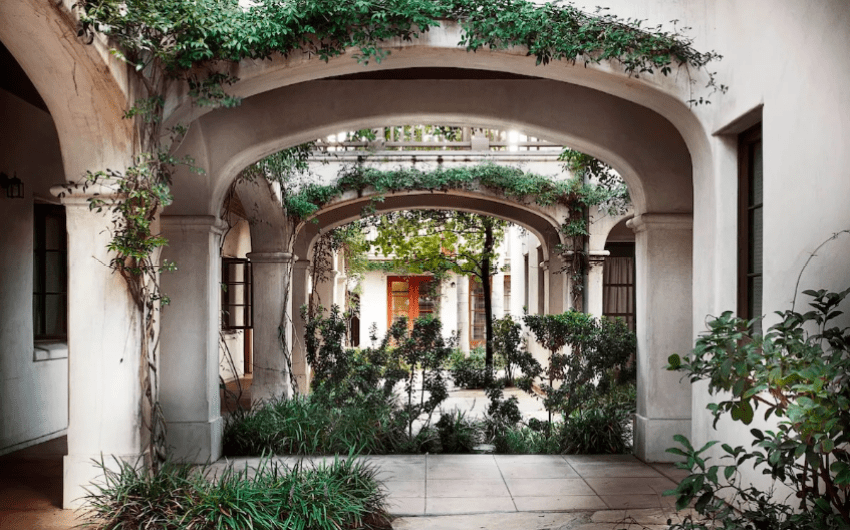
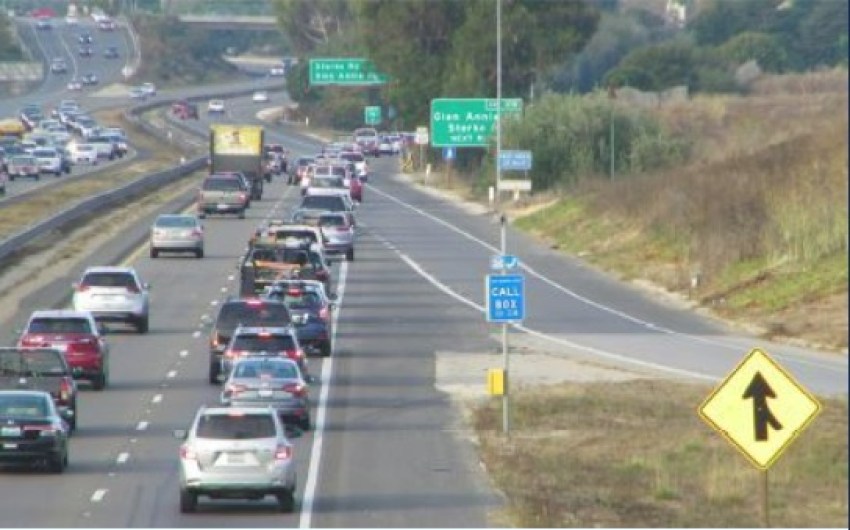
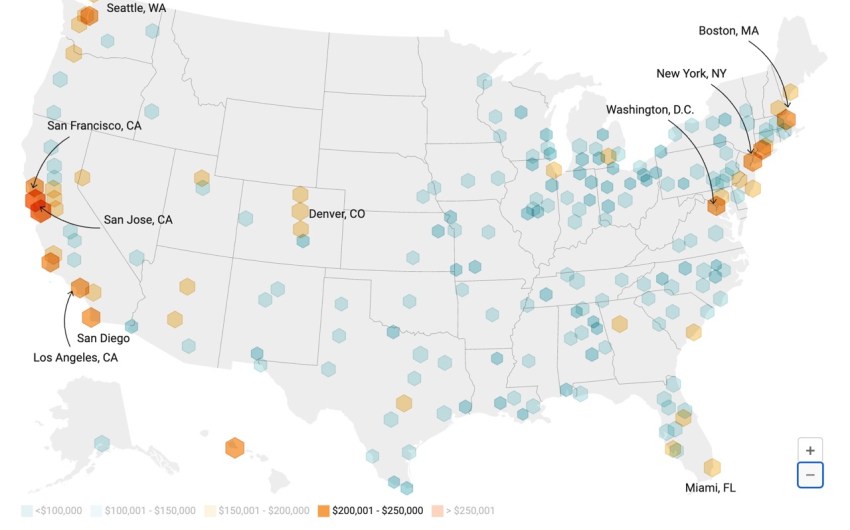

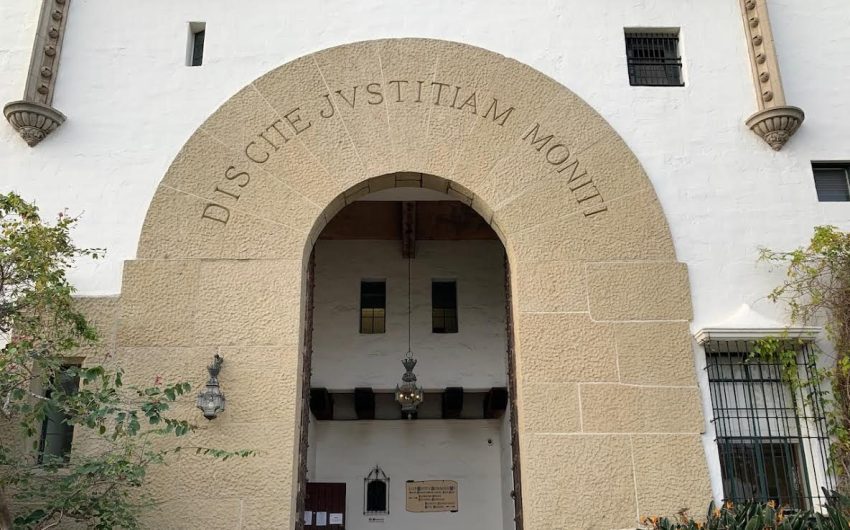







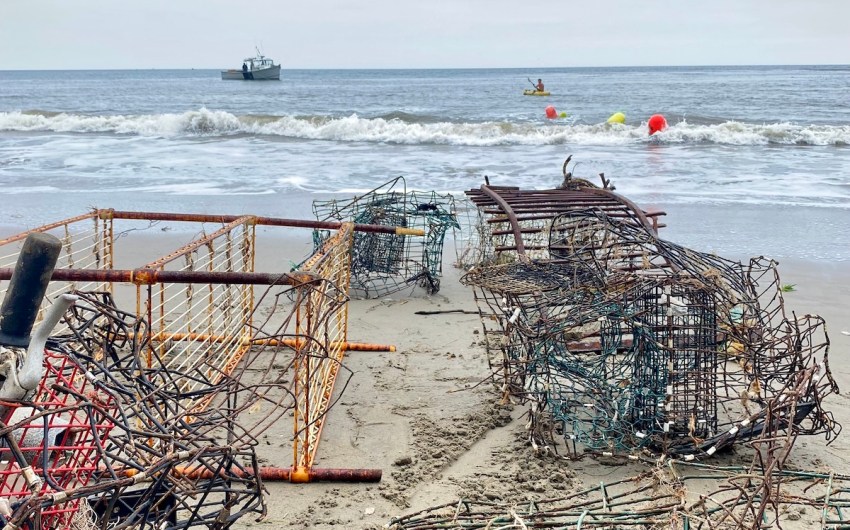









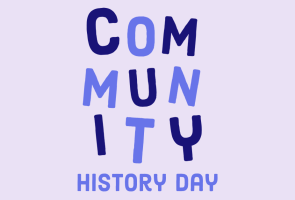
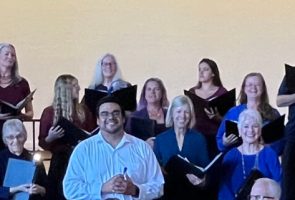

You must be logged in to post a comment.